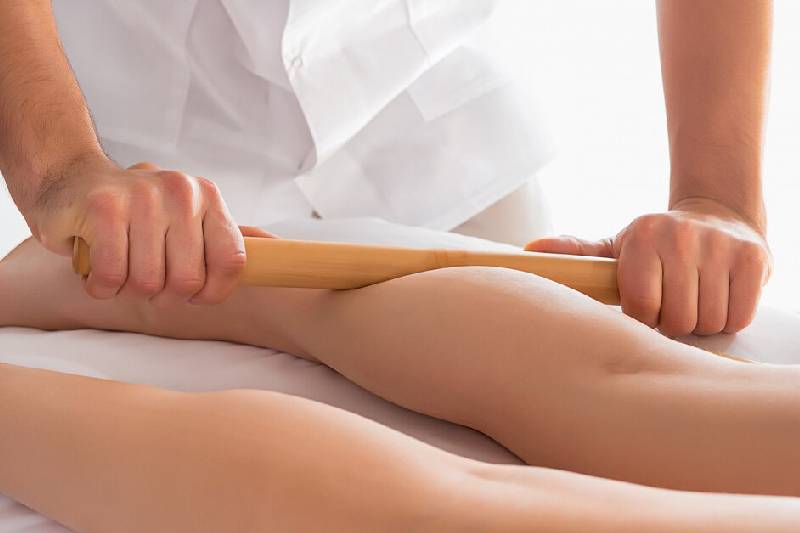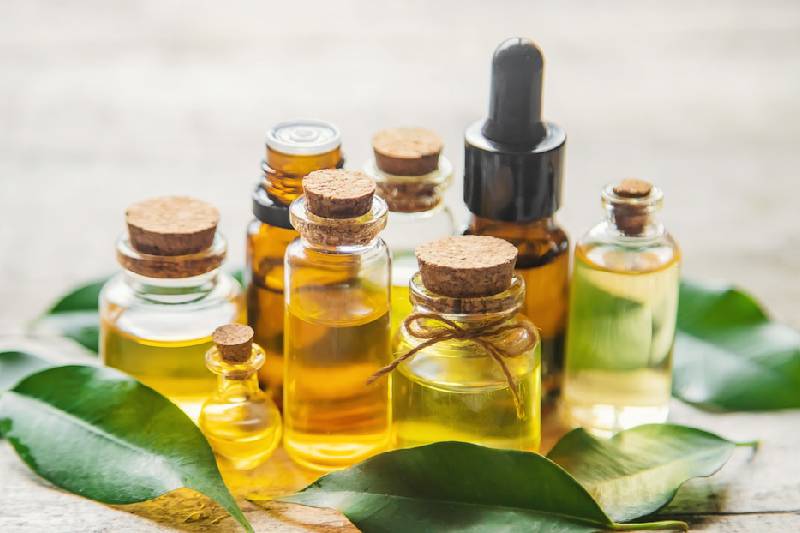Cellulite Types: Home Remedies And Treatments

Cellulite is a common concern that affects individuals of all ages and genders. These dimples and lumps, primarily found around the buttocks and thighs, can have a significant impact on self-esteem and body confidence.
In this comprehensive article, we will explore the different types of cellulite in more detail and delve into effective treatment options to help you regain smoother, firmer skin.
Understanding Cellulite
Before we delve into the types and treatments, it's crucial to have a thorough understanding of what cellulite is and what causes it. It occurs when fat deposits push through the connective tissue beneath the skin, creating a dimpled or lumpy appearance. Several factors contribute to the development of cellulite, including genetics, hormonal changes, lifestyle choices, and the natural ageing process.
Types of Cellulite
 It isn't a one-size-fits-all condition. There are several distinct types, each with its own characteristics and appearance. Identifying the specific type of cellulite you have is essential for choosing the most effective treatment approach.
It isn't a one-size-fits-all condition. There are several distinct types, each with its own characteristics and appearance. Identifying the specific type of cellulite you have is essential for choosing the most effective treatment approach.
Soft Cellulite
It is the most common type, characterized by a wobbly, saggy texture. It is typically noticeable when you pinch the skin. Soft cellulite often appears on the thighs and buttocks. This type can be influenced by factors like genetics and a sedentary lifestyle.
Hard Cellulite
It feels firm to the touch and is usually concentrated in specific areas. It can even be painful when pressure is applied. Hard cellulite is commonly found on the thighs and buttocks. Hormonal changes and a lack of blood flow may contribute to its development.
Edematous Cellulite
It is characterized by swelling and fluid retention, giving the skin a puffy appearance. It's typically seen on the legs and may be accompanied by a sensation of heaviness. Poor circulation and lymphatic drainage can contribute to edematous cellulite.
Mixed Cellulite
As the name suggests, it combines characteristics of both soft and hard cellulite. This type can be challenging to treat and may require a combination of approaches. It's often seen in individuals with a variety of contributing factors, including genetics, hormones, and lifestyle choices.
Types Of Cellulite Treatment
Now that we've identified the types of cellulite, let's explore effective treatment in more detail.
Topical Creams
Topical creams can be a convenient and non-invasive option for reducing the appearance. Look for products that contain active ingredients such as caffeine, retinol, and antioxidants. These ingredients can help improve skin elasticity and reduce visibility over time.
 Massage Therapy
Massage Therapy
Regular massage therapy, especially deep tissue massage, can help break down fat deposits and improve blood circulation. This can contribute to reducing the appearance of the issue over time. Massages also help to relax the muscles and promote lymphatic drainage, which can be beneficial for edematous cellulite.
Exercise
Physical activity is a crucial component of cellulite management. Engaging in regular exercise, including both strength training and cardio workouts, can help tone the muscles and reduce the visibility of the condition. Exercises that target the thighs and buttocks are particularly effective.
Healthy Diet
A balanced and nutritious diet plays a significant role in managing cellulite. Consuming foods rich in fruits, vegetables, lean proteins, and whole grains can contribute to weight management and reduce the accumulation of fat. Adequate hydration is also essential for overall skin health.
Ayurvedic Home Remedies
Ayurveda, with its deep understanding of the body's constitution (dosha) and natural healing, offers a holistic approach to addressing cellulite.
Let's explore the best Ayurvedic home remedies that have stood the test of time, helping individuals regain their skin's natural beauty.
Dry Brushing
Dry brushing with a natural bristle brush stimulates blood circulation, exfoliates the skin, and reduces the appearance. It's a simple yet effective Ayurvedic practice.
 Herbal Oils
Herbal Oils
Massaging prone areas with herbal oils like sesame or coconut oil, combined with essential oils like juniper, cypress, or grapefruit, can enhance skin elasticity and diminish cellulite.
Triphala
Consuming Triphala, an Ayurvedic herbal preparation made from three fruits, aids digestion and detoxification, indirectly contributing to the management of the issue.
Guggul
Guggul supplements, known for their anti-inflammatory properties, help reduce inflammation and improve blood flow in prone areas, promoting smoother skin.
Self-Massage
Perform self-massage (Abhyanga) using Ayurvedic oils on a regular basis. This not only benefits the skin but also promotes relaxation and overall well-being.
Herbal Teas
Consider drinking herbal teas made from herbs like ginger, fennel, and fenugreek. These teas can aid digestion and promote detoxification.
Lymphatic Massage
Ayurveda emphasizes the importance of lymphatic health. Seek professional lymphatic drainage massages to improve lymphatic circulation and reduce fluid retention.
Hydration
Maintaining proper hydration by drinking warm water with lemon or herbal teas throughout the day is crucial for healthy skin and digestion.
Dietary Guidelines for Cellulite
In addition to incorporating Ayurvedic remedies, dietary choices can significantly impact cellulite management.
Here are some dietary guidelines:
Foods to Include
- Hydrating Foods: Include water-rich foods like cucumbers, watermelon, and celery to help flush out toxins and maintain skin elasticity.
- Antioxidant-Rich Foods: Berries, citrus fruits, and leafy greens are packed with antioxidants that combat free radicals, which can contribute to formation.
- Lean Protein: Incorporate lean protein sources like chicken, turkey, and fish into your diet. Protein supports muscle health and can help reduce the appearance.
- Omega-3 Fatty Acids: Foods such as salmon, flaxseeds, and walnuts contain omega-3 fatty acids that promote skin health and reduce inflammation.
Foods to Avoid
- Processed Foods: High-sugar, high-sodium, and processed foods can contribute to inflammation and fluid retention, exacerbating the appearance.
- Excess Sugar: Minimize your consumption of sugary snacks and beverages, as excess sugar can lead to weight gain and the issue.
- Trans Fats: Avoid foods containing trans fats, such as fried and packaged snacks, as they can increase inflammation and contribute to the formation.
- Excessive Salt: Reduce your salt intake, as high sodium levels can lead to fluid retention and bloating.
Conclusion
We have covered a detailed guide on types Of Cellulite and treatment options related to it. It is a common cosmetic concern that can affect anyone. By understanding the various types of cellulite and exploring the treatment options available, you can make informed decisions about managing and reducing its appearance. Remember that results may vary from person to person, and it's essential to consult with a healthcare professional before pursuing any treatment.
FAQs
Is cellulite only a concern for women?
No, It can affect both men and women, although it is more commonly reported in women. Genetics and hormonal factors play a significant role.
Are there any natural remedies for cellulite?
Some natural remedies like dry brushing, coffee scrubs, and certain dietary changes are said to help reduce the appearance. However, their effectiveness varies, and consistent use is often required.
How long does it take to see results from cellulite treatments?
The time it takes to see results from the treatments varies depending on the method used and individual factors. It may take several weeks or even months of consistent effort to notice significant improvements.
Can cellulite be completely eliminated?
While it can be reduced and its appearance improved, it is challenging to completely eliminate. Managing often requires ongoing efforts and a combination of treatments and lifestyle changes.
Are there any side effects associated with medical cellulite treatments?
Yes, medical procedures may have side effects, including swelling, bruising, and discomfort. It's essential to discuss these potential side effects with a healthcare provider before undergoing any treatment.
Related Articles
- 30 Sep 24
Updating Soon The Episodes
- 30 Sep 24
Storing Essential Oils
- 30 Sep 24
What Are Essential Oils
- 30 Sep 24
Science Of Essential Oils
- 30 Sep 24
Happy To Receive Naari Samman Award
- 30 Sep 24
How Are Essential Oils Obtained?
- 30 Sep 24
Gateway To Africa - Istanbul
- 30 Sep 24
Et Global Indian Leader 2022
- 30 Sep 24
Can Essential Oils Help With Self-Care?
- 30 Sep 24
Pain Remedy Essential Oils
- 30 Sep 24
Asian - African Iconic Brand Awards 2022
- 30 Sep 24
Core & Pure Pain Buster Oil
- 30 Sep 24
Tea Tree Essential Oil From Core & Pure
- 30 Sep 24
Business Icon Award
- 30 Sep 24
